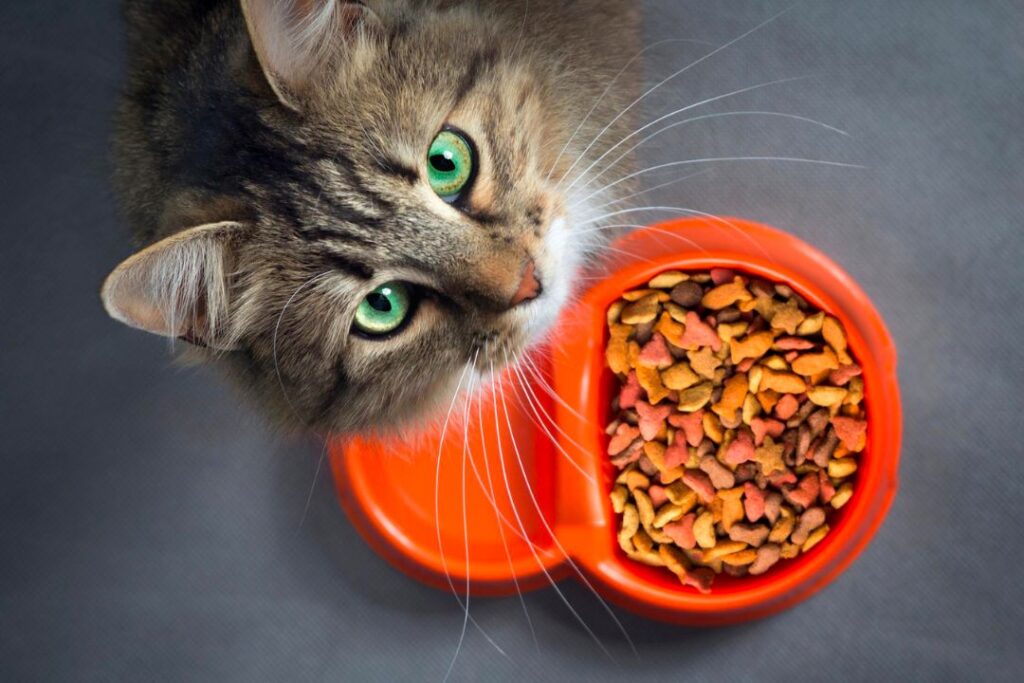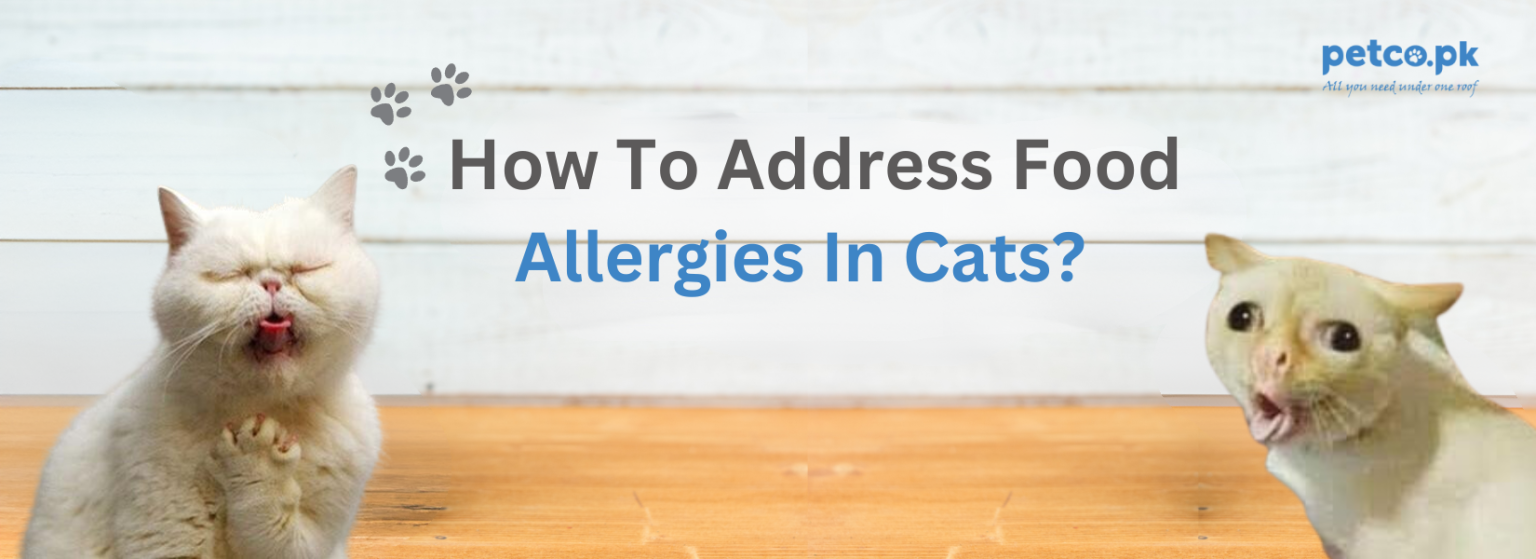Food allergies in cats can be a frustrating issue for both the cat and the owner. Understanding how to identify, diagnose, and manage these allergies is crucial for ensuring your feline friend leads a happy and healthy life. This guide will cover the symptoms of food allergies, the diagnostic process, and effective management strategies.
Understanding Food Allergies in Cats
Food allergies in cats occur when their immune system mistakenly identifies a protein in their diet as harmful. This reaction can lead to a variety of symptoms, ranging from mild to severe. Common food allergens include beef, chicken, fish, dairy products, and certain grains.
Symptoms of Food Allergies
Recognizing the symptoms of food allergies is the first step in addressing the problem. Common symptoms include:
Skin Issues: Itching, redness, rashes, and hair loss.
Digestive Problems: Vomiting, diarrhea, and flatulence.
Ear Infections: Chronic ear infections or inflammation.
Respiratory Issues: Sneezing, coughing, or wheezing.
Diagnosing Food Allergies
Proper diagnosis is essential for effectively managing food allergies. Here are the steps typically involved in diagnosing food allergies in cats:
Elimination Diet
An elimination diet is the most reliable method for diagnosing food allergies. This process involves feeding your cat a diet consisting of novel proteins and carbohydrates that they have not been exposed to before. The diet should be followed strictly for 8-12 weeks, during which you monitor your cat for any improvement in symptoms. If the symptoms subside, you can gradually reintroduce old food ingredients one at a time to identify the specific allergen.
Veterinary Consultation
Working with your veterinarian is crucial during the diagnostic process. They can help guide you through the elimination diet and rule out other potential causes of your cat’s symptoms, such as environmental allergies or parasites.

Managing Food Allergies
Once you have identified the allergen, managing your cat’s food allergies involves avoiding the offending ingredient and ensuring a balanced diet.
Hypoallergenic Diets
Hypoallergenic diets are specifically formulated to minimize the risk of allergic reactions. These diets often use hydrolyzed proteins, which are broken down into smaller components that are less likely to trigger an immune response. Commercial hypoallergenic cat foods are available, or your veterinarian may recommend a homemade diet tailored to your cat’s specific needs.
Regular Monitoring
After switching to an appropriate diet, it’s important to regularly monitor your cat for any signs of a recurring allergy. Keep an eye on their skin condition, digestion, and overall behavior, and consult your veterinarian if any issues arise.
Prevention Tips
While it may not be possible to completely prevent food allergies, there are steps you can take to reduce the risk:
Gradual Introduction of New Foods
When introducing new foods to your cat’s diet, do so gradually. This allows you to observe any adverse reactions and identify potential allergens early.
Rotate Protein Sources
Rotating protein sources in your cat’s diet can help prevent the development of allergies to specific proteins. This practice ensures that your cat is exposed to a variety of nutrients while reducing the risk of sensitization.
Cross-Reactivity
Cross-reactivity occurs when a cat allergic to one protein also reacts to a similar protein in another food source. For example, a cat allergic to chicken may also react to turkey. Understanding cross-reactivity can help you make informed decisions about your cat’s diet.
Managing Severe Cases
In severe cases where food allergies lead to significant discomfort or health issues, more intensive management may be required. This can include:
Medications
Your veterinarian may prescribe medications to manage severe allergic reactions or secondary infections resulting from scratching and skin irritations. Antihistamines, corticosteroids, and antibiotics may be used as part of the treatment plan.
Specialized Diets
For cats with multiple food allergies or sensitivities, a highly specialized diet may be necessary. Your veterinarian can help you formulate a diet that meets your cat’s unique needs while avoiding allergens.
Living with a Food-Allergic Cat
Living with a food-allergic cat requires diligence and patience. Here are some tips to help you and your cat thrive:
Consistent Diet
Stick to the diet plan recommended by your veterinarian and avoid giving your cat any table scraps or treats that could contain allergens.
Educate Household Members
Ensure that everyone in your household is aware of your cat’s food allergies and understands the importance of sticking to the prescribed diet.
Regular Vet Visits
Schedule regular veterinary check-ups to monitor your cat’s health and make any necessary adjustments to their diet or treatment plan.
Conclusion
Addressing food allergies in cats involves careful observation, proper diagnosis, and diligent management. By recognizing the symptoms, working closely with your veterinarian, and providing a suitable diet, you can help your cat lead a comfortable and healthy life. Remember, every cat is unique, and what works for one may not work for another, so patience and persistence are key in finding the best solution for your furry friend.
Amazon Brand - Presto! Garbage Bags | Small | 180 Count | 30 Bags X 6 Rolls | 17 X 19 Inches | For Dry & Wet Waste | Black
₹299.00 (as of 23 April, 2025 17:12 GMT +05:30 - More infoProduct prices and availability are accurate as of the date/time indicated and are subject to change. Any price and availability information displayed on [relevant Amazon Site(s), as applicable] at the time of purchase will apply to the purchase of this product.)JIALTO 10 Pcs Stainless Steel, PVC, ABS Nail Free Seamless Adhesive Non-Trace No Drilling Installation Hanging, Waterproof Screws Wall Hook (Transparent)
₹98.00 (as of 23 April, 2025 17:12 GMT +05:30 - More infoProduct prices and availability are accurate as of the date/time indicated and are subject to change. Any price and availability information displayed on [relevant Amazon Site(s), as applicable] at the time of purchase will apply to the purchase of this product.)Chandan Wood Wooden Piggy Bank for Kids & Adults, Coin Box with Carved Design, Savings Box, Mini Bank, Donation Box, Smart Money Box, Wooden Coin Box, Money Saver, Piggy Bank with Numbers (1)
₹499.00 (as of 23 April, 2025 17:12 GMT +05:30 - More infoProduct prices and availability are accurate as of the date/time indicated and are subject to change. Any price and availability information displayed on [relevant Amazon Site(s), as applicable] at the time of purchase will apply to the purchase of this product.)Drumstone 𝟏𝟓 𝐘𝐞𝐚𝐫𝐬 𝐖𝐚𝐫𝐫𝐚𝐧𝐭𝐲 Portable AC Fan for Room Cooling, Mini Evaporative Cooler with 3 Wind Modes, 1/2/3 Hour Timer, & Adjustable 60° Airflow, LED Night Light_Multicolor
₹1,299.00 (as of 23 April, 2025 17:12 GMT +05:30 - More infoProduct prices and availability are accurate as of the date/time indicated and are subject to change. Any price and availability information displayed on [relevant Amazon Site(s), as applicable] at the time of purchase will apply to the purchase of this product.)innovative edge Reversible AC Comforter Single Bed King Size Quilt Blanket for Summer
₹498.00 (as of 23 April, 2025 17:12 GMT +05:30 - More infoProduct prices and availability are accurate as of the date/time indicated and are subject to change. Any price and availability information displayed on [relevant Amazon Site(s), as applicable] at the time of purchase will apply to the purchase of this product.)Discover more from The General Post
Subscribe to get the latest posts sent to your email.





